After taking you to beautiful Margaret Island, we’d like to show you another unique Budapest place: Memento Park, a collection of Communist-era statues and monuments.
Where tyranny exists
That tyranny exists
Not only in the barrel of the gun
Not only in the cells of the prison
Not just in the interrogation block
Or the small hours of the clock
The guard’s bark and his fists…
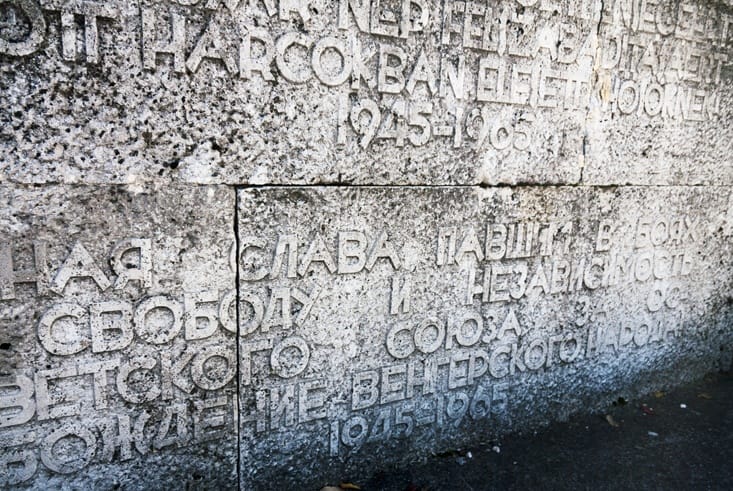
At the entrance of Budapest Memento park Gyulia Illyés’s poem One Sentence about Tyranny is displayed. It is a moving poem. A poem of loss and despair, of hopelessness. If you’re interested, you can read the English translation here. It is a poem most of us won’t be able to understand.
For to know tyranny, to know dictatorship, you need to have experienced it.
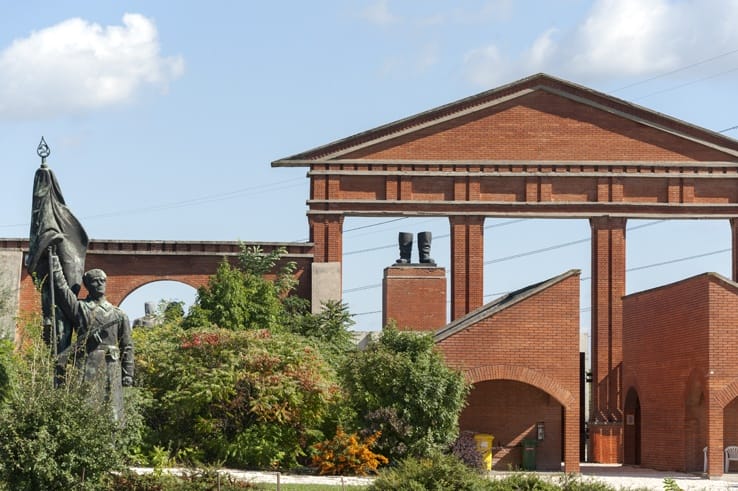
The poem talks in chilling images. Of ‘silence-breeding fears’, of ‘half-hearted greetings, handshakes of alarm’, of ‘snow, that rises and waits like a cell’.
The poem was written in 1950, but became famous in 1956, during the failed Hungarian uprising against the Soviet regime. Thirty-five years later, the first free elections were being held in Hungary, after the Eastern Bloc crumbled.

As many other former Communist countries, Hungary found itself facing a quandary after the fall of the Iron Curtain. What to do with those giant, imposing statues that crowded the cities, visible representation of those famous Big Brothers all school kids were thought to fear and revere?

Condemning them to the rubbish tip or melting them down would have been easier. Easier to erase, to hide, to conceal the darkest chapter of Hungary’s recent history.
But this is not what democracy does. Dictatorship erases, hides, conceals. In the words of Ákos Eleőd, the creator of Budapest’s Memento Park, “democracy is the only regime which is capable of looking back to its past, with all its mistakes and wrong turns, with its head up”.
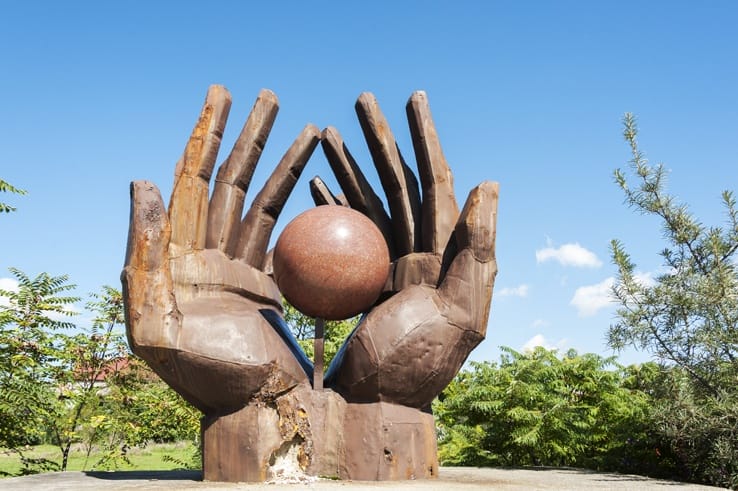
On June 29th, 1993, the second anniversary of the withdrawal of the last Soviet soldier from Hungary, Memento Park was opened, in the outskirts of Budapest.

A collection of 42 statues, from Lenin to Marx and Engels, from triumphant Soviet soldiers to Bela Kun, Hungary’s very own controversial leader. Several projects were discussed on how to display the statues. There were two main schools of thought. Some recommended a ‘shame’ park, publicly denouncing and condemning the horrors of the dictatorship. Others supported a more light-hearted solution; a ‘grotesque’ park, focusing on the idiosyncrasies of communism and its leaders.

Eventually, a third solution was deemed the best. A project by young architect Ákos Eleőd, aimed at questioning the historical era examined and rationally analysing it.
The park is divided in two areas. On one end, there’s Witness Square, dominated by a huge pedestal with a pair of gigantic boots: Stalin’s boots. This is a reference to the 1956 revolution, when the largest Budapest statue of the recently-deceased Soviet leader was knocked down, and only the boots remained. The square becomes the remembrance site of the fall of the regime, of the victory of Democracy, of Freedom.
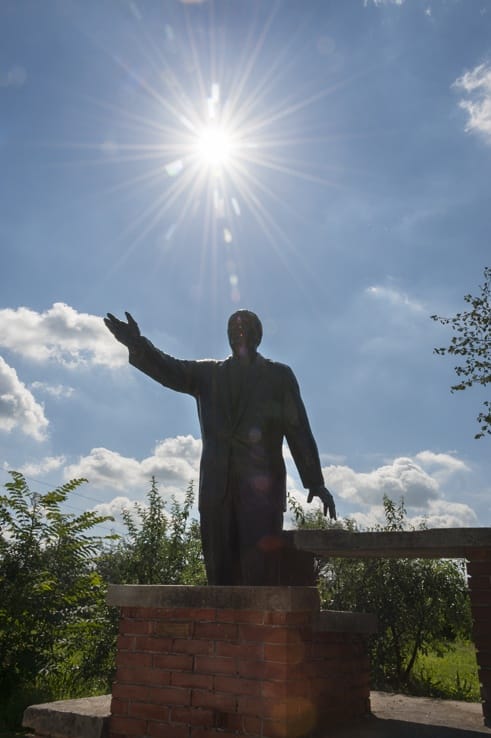
In the architect’s words, “Witness Square is Széna Square, Budapest, in 1956. It is Wenceslas Square, Prague, in 1968. It is Palace Square, Warsaw, in 1981. It is Opera Square, Timisoara, in 1989. It is Potsdamer Square in Berlin. It is the Square of the National Assembly, in Sofia”.
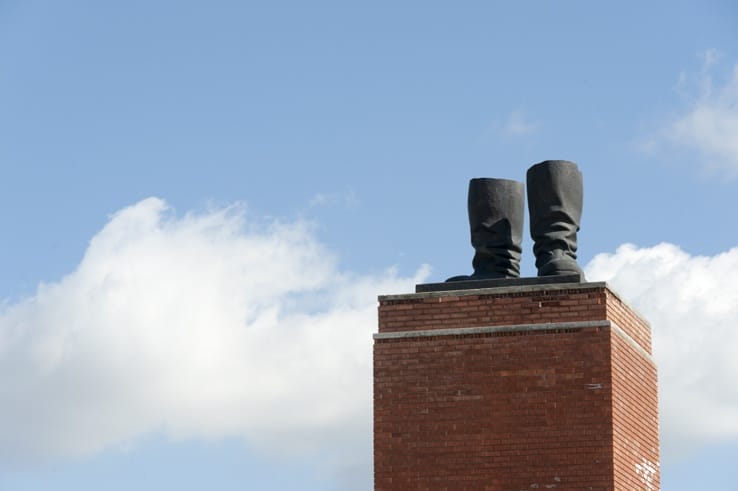
Across from Stalin’s boots, the second section of Memento Park begins. The statues are places around a series of round intertwining squares, reminiscent of the symbol of infinity. Roads that lead nowhere. No buildings, no explanations; nothing. Just silence. A silence that is pain, rage, defiance, hopelessness. The same silence that resounds around the statue is the silence of the poem, of those chilling images, of a darkness that seemed to have no end.

In Memento Park, some people play. They mock the poses of the statues, have their picture taken next to Lenin, next to Marx and Engels. Most people walk in silence. Some may have lived the era, may have known the terror, the whispers in dark corners that ended with the chilling knock on the door. Others try to understand. But the silence is shared.


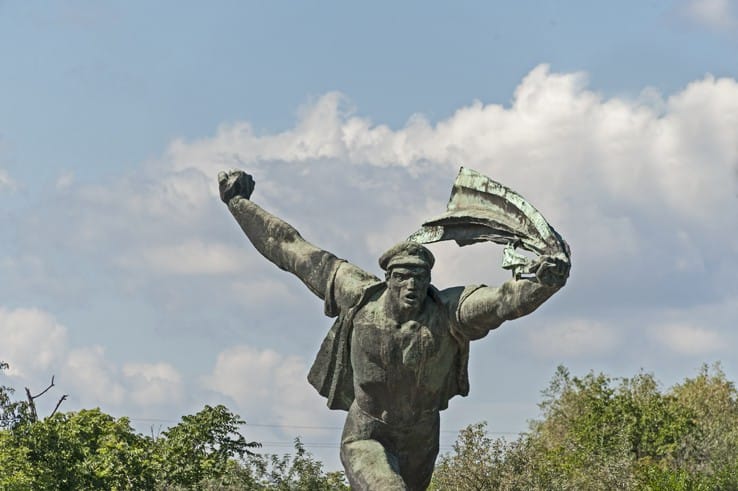

Absolutely fascinating article. Love to rediscover these old parts of history that perhaps go forgotten about because of the sad memories of a Soviet that many wish to forget.
Thanks for sharing this, I can’t understand why I never saw this in Budapest when we were there last. Maybe next time.
I missed this in Budapest but it looks very interesting. I appreciate that they chose not to destroy them, but leave them standing as a reminder of their history.
I like that they left the park there to remember the hard times the country went through–it’s nice it can be seen by some people as a symbol of Freedom!
Sounds like is has some great history to go with the statues. Not really having any knowledge of the terror of that era I would definitely want to arrive there with the history and story behind it’s meaning to fully appreciate the park.
I don’t know how I managed to miss all of these amazing spots in Budapest!! All of your posts keep presenting me with new reasons to go back :D!
…when i say great history perhaps that could be misinterpreted. I mean intense history. And I say “great” in the sense that I appreciate these kind of parks and memorials to remind us of our horrid pasts. I think the only way we will not repeat the same mistakes is to have something to constantly remind us of the past.
I’m glad that this is still there, and I’d like to explore it myself. I think that we can all learn from the past, as to not repeat things in the future, so it is important this exists.
I’ve been in Budapest so many times and didn’t even hear about Memento Park. Not that I would have gone to visit it. It would have been a painful reminder of the years I lived under the oppressive Communist regime of Romania… speaking of experiencing tyranny and dictatorship. But I have to say it looks very interesting. I am surprised though that the Hungarians chose to keep these kind of “mementos” rather than destroy them.
Thanks for sharing this! I’m hoping to visit Budapest in December. I’ll have to make it to this interesting park.
I know this park is crazy, isn’t it? It’s like they were thinking: we want to get rid of this rubble ríght nów, but also realised that it’s part of their heritage… so lets dump it all in one site. Crazy! Did you also visit the gift shop where you can buy espionage 101 instructions?
wow – what can I say, very impressive! To be honest I don’t know much about this part of European history and I should learn more .. after all we all had to deal with this some way and it’s important to learn…
I find places like this so interesting and I love learning about the history behind them. I’m not sure why people are so interested in dark times, I guess it’s just like that car wreck that you can’t look away from kind of feeling.
Either way, I’m really sad I missed Budapest. Reading all your articles on it is making me kick myself for doing so!
So many creepy statues!!!! 😮
I agree with Beth’s comments that these types of places are really interesting and intriguing! You can always learn so much history in parks like this and given that my knowledge in this part of the world is limited, I definitely think it would be cool to head here and experience everything Memento Park has to offer!
I love the idea of a place like this – though it’s sort of surreal to see the statues in what would otherwise be such a cheerful, open setting.
I’ve visited Memento Park, and it’s hard to believe these were all around the city. It certainly sounds something like George Orwell’s 1984, doesn’t it? It’s hard to believe what it must’ve been like in those times?